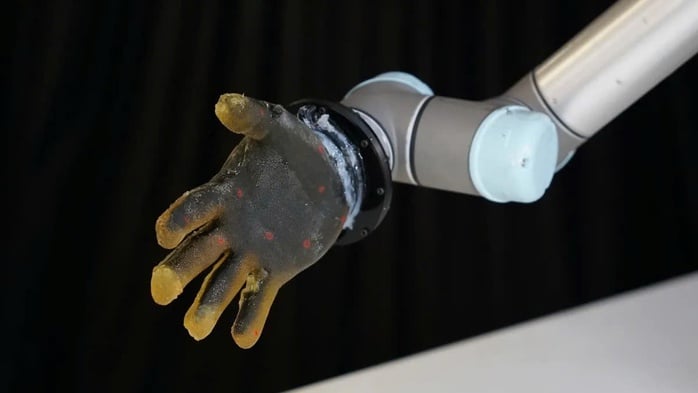In a study recently published in the journal Science Robotics, scientists at the University of Cambridge and University College London (UK) have developed an artificial skin that can help robots feel physical impacts such as pressure, temperature and even physical damage like human skin.
The skin is made from gelatin hydrogel, a soft, flexible, conductive material that can be molded into a variety of shapes. When integrated with special electrodes, the skin picks up signals from hundreds of thousands of electrical pathways inside, allowing the robot to sense touch at a delicate level.
To test the sensitivity and durability, the team conducted a series of live tests on the robotic hand model, including blowing heat with a heat gun, poking with human and robot hands, and even using a scalpel to cut the skin. More than 1.7 million data units were recorded from more than 860,000 paths on the skin layer, which were used to train the artificial intelligence to recognize different types of contact.

Close-up of a robotic hand with gelatin skin. Photo: University of Cambridge
Unlike previous electronic skins that required multiple sensors, the new robot skin only requires one multifunctional sensor, simplifying the design, saving costs, and reducing signal interference. With these advantages, this product is expected to soon be applied to the production of humanoid robots, tactile prosthetic limbs, as well as search and rescue equipment or smart cars.
"We can't say that the robot skin has reached the same level of sensitivity as human skin, but for now, this is probably the best technology in the field," said Thomas George Thuruthel, a lecturer in robotics and artificial intelligence at University College London. "This method is flexible, easy to manufacture and can be calibrated with real human touch," he stressed.
The new discovery is expected to create a breakthrough in the field of emotional robots and human support devices, bringing technology closer to natural interaction between humans and machines.
Source: https://nld.com.vn/robot-biet-dau-nho-da-nhan-tao-moi-196250708205221021.htm


































































































Comment (0)